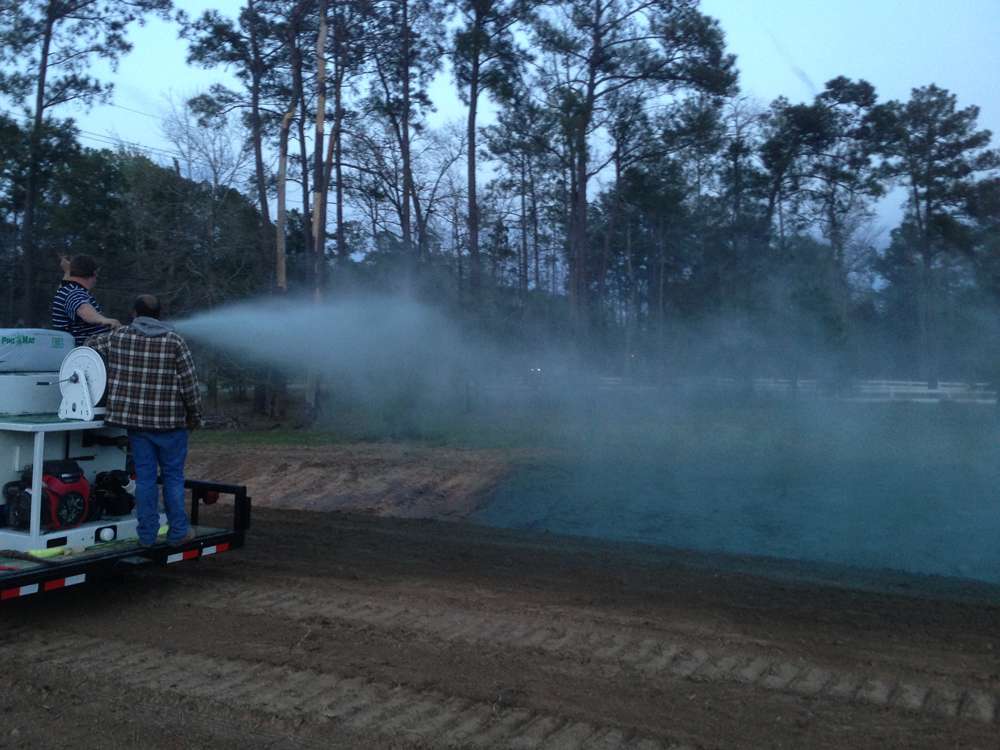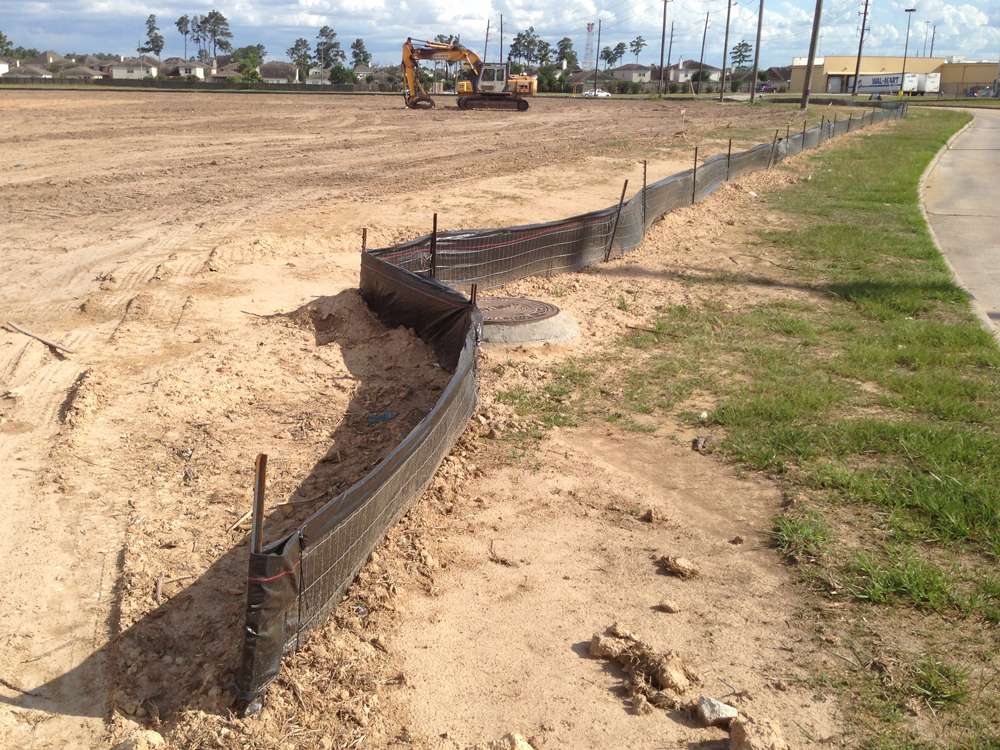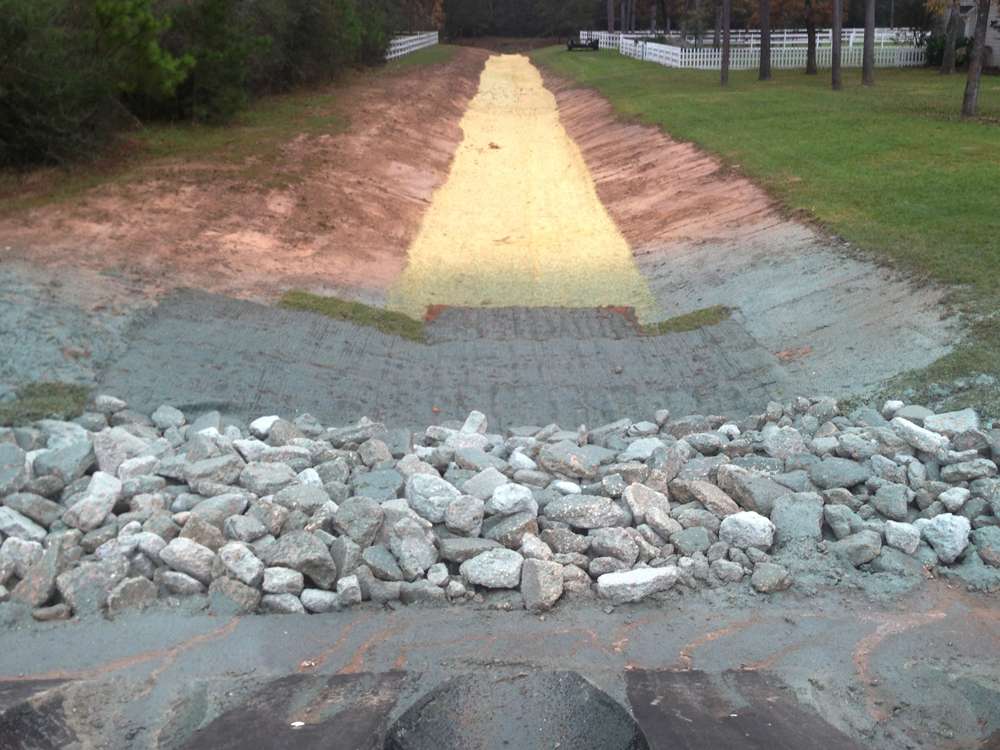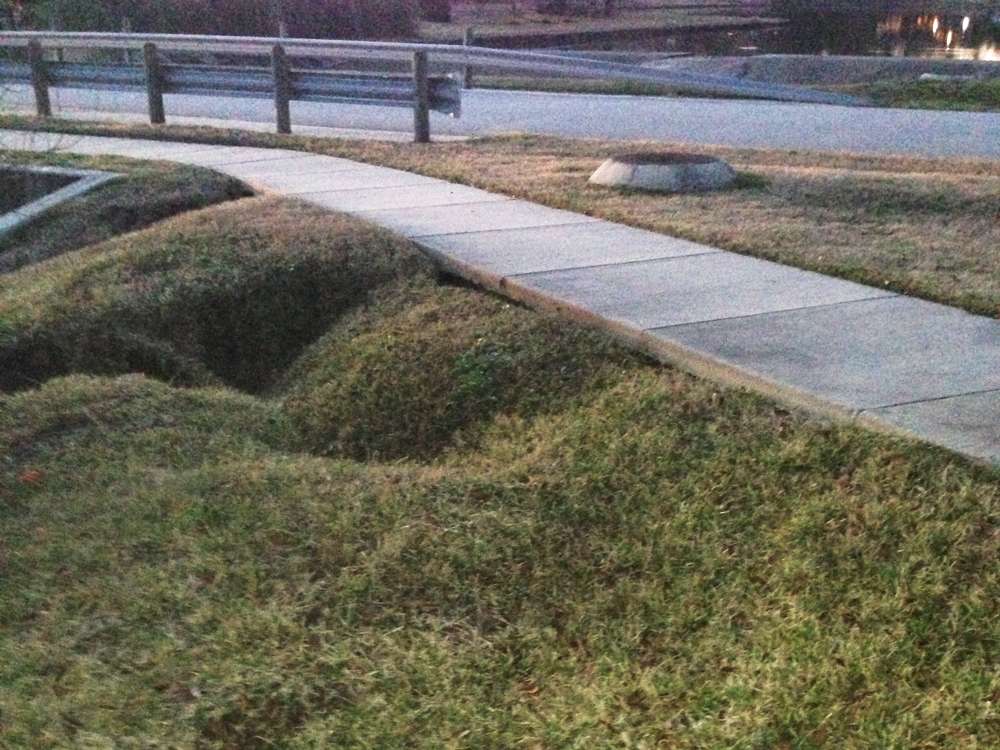Erosion Control and Prevention
- Home
- Erosion Control and Prevention
After the dirt is placed on your pad, or around your pond, or as your drainage berm or swale, or along your road, what will keep it there until grass roots hold it in place?There are several ways to control erosion. The cheapest and most effective way is usually to get grass established quickly.
Whatever your reason, Daniel Dean knows what it takes to buiA saying I made many years ago: “If the grass doesn’t stay, the dirt will wash away.” Daniel Deanld a pond that holds water.
How much does it cost? To receive your free estimate, click Estimate My Job button:
Broadcast and HydroSeeding

Broadcast seeding involves scattering seed by hand or mechanically over a relatively large area. It’s simple, fast, and easy. After broadcasting, the seed is often lightly buried by raking. This increases the success of germination.
read more
Hydroseeding uses a slurry of seed and mulch, and is ideal for large areas where erosion is an issue. It is the fastest, highest quality method of seeding lawns, construction areas and roadsides for erosion control practices. Ideal for slopes that are difficult to plant.
Silt Fence

One of the easiest and quickest ways to making sure that dirt stays in place when rains threaten erosion is to install an erosion control fence, also known as a silt fence.
read more
A silt fence is a temporary sediment control device made from porous fabric and used on construction sites to protect water quality in nearby streams, rivers, lakes and seas from sediment (loose soil) in storm water runoff. It allows water to flow through it, but prevents up to 80 percent of water-borne particles from escaping. It is installed with about 6 inches buried below the ground surface.
Erosion Control (blankets, stabilization fabrics, Rip-Rap)

An erosion control blanket is a synthetic or natural fiber blanket to protect soil from the erosion caused by heavy rain or shedding water flow. They also retain moisture and facilitate establishment of vegetation.
read more
Stray blankets are typically recommended for areas where there is high water flow, steeper slopes or longer-term use. For even longer wear, geo-textiles and Rip-Rap erosion control solution is typically used. These high-strength fabrics are laid beneath rocks or stones to provide a solid structure underneath.
Sinkholes

Homeowners commonly call ‘sinkholes’ as the area where the soil or grass collapses, or sinks, to form large holes. The formation of sinkholes involves natural processes of erosion.
read more
Sinkholes that occur near outside walls usually develop because the soil along the structure was poorly compacted. They can also be caused by buried or rotting debris or tree stumps that are not removed, or by poorly compacted soil around buried drainage pipes or sewer lines. Over several years, the debris decomposes and the soil settles and causes a depression or hole.
Daniel Dean has corrected many sinkholes with lasting solutions. We determine the severity of the problem and clean out the loose debris. Then compact layers of select fill, and recover the top with grass of organic top soil.
